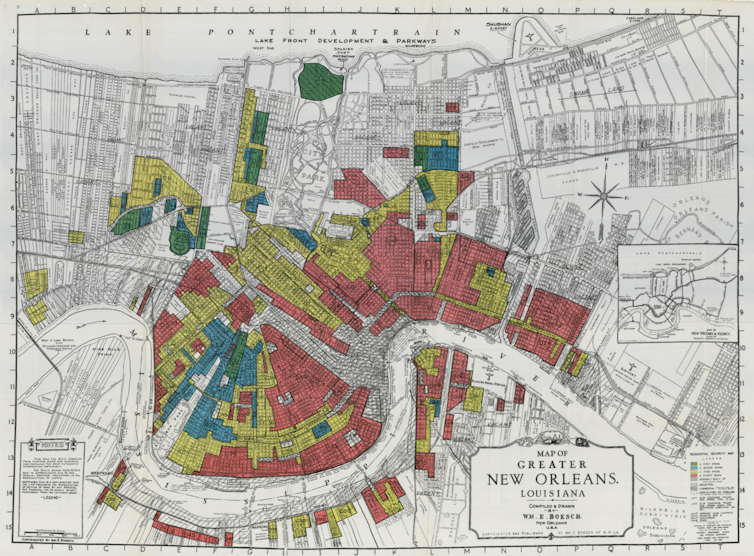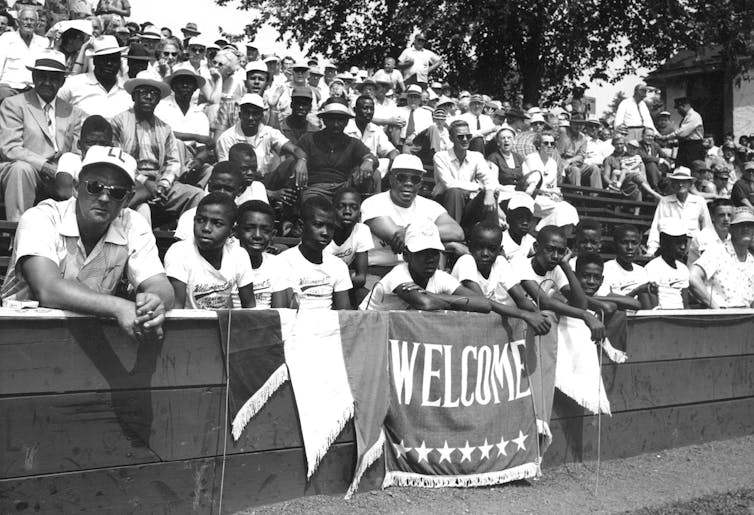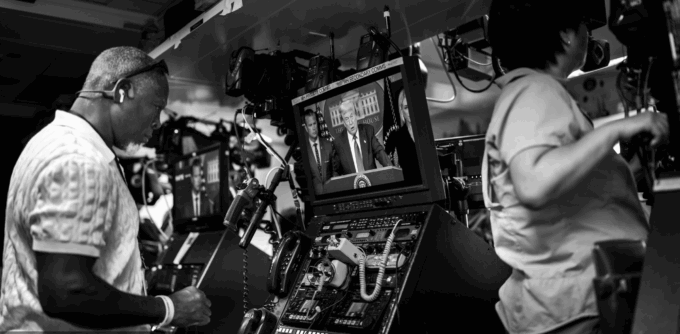
Image by Imkara Visual.
Sometimes I dream — in the sense of a nightmare — about bringing my parents back to this all too strange world of ours to tell them about… yes, of course, Donald J. Trump. They died long before The Apprentice even made it onto TV early in this century, so — best guess — though they also lived in New York, they undoubtedly had never heard of him.
My mother died in 1977 when Donald Trump was 31 and Jimmy Carter was president; my father in 1983 when Trump was 37 and Ronald Reagan was president. But nothing, not even Richard Nixon, could have prepared them for a Trump presidency, not once but (yes!) twice.
Mind you, my father was a salesman and, in that sense, he might have understood something about Trump, including his ability to sell himself to all too many of the rest of us so damn successfully, again not once but twice — and if he has anything to do with it, maybe (but “probably” not) a third time, too. My parents could never have imagined, however, that the country which, at my mom’s birth, had Theodore Roosevelt as president and, in the years to come, Franklin D. Roosevelt and John F. Kennedy, among others, would have elected a madly self-referential ex-salesman with six bankrupt businesses in his past to the White House not once, but — yes, again! — twice.
I think my mother, a professional political and theatrical caricaturist, might have grimly laughed and then gone to her easel to turn him into her caricature of the ages. She would undoubtedly have caught his strange essence, as she did that nightmarish Trumpian figure of her moment (though he never had the same power to devastate our world), Senator Joe McCarthy.
And believe it or not, there is indeed some appropriate history here. Great powers — and after the Soviet Union collapsed and the Cold War ended in 1991, this country seemed to be a great power like no other, possibly ever — do come and go. Indeed, the going can be bizarre and disorienting. But when they come, it often seems as if they might be here forever and a day. And of course, in that now distant moment when the Soviet Union suddenly unraveled and China had not yet risen, the U.S. did appear to be The Great Power (and capitals and italics are indeed appropriate), the only one left on Planet Earth.
At the time, in fact, it felt as if this country might actually prove to be the Ultimate Great Power, the Greatest of All. Who then could have imagined that, not quite a quarter of a century later, the U.S. would, in its own fashion, have gone to the dogs, that it would be ever more — and yes, we do need some new words to describe this increasingly stranger, more disturbing world of ours — tariffyingly alone on an increasingly resentful and hostile planet? And mind you, I’m not just thinking about countries like Brazil, India, and Switzerland that are deeply ticked off by Donald Trump’s soaring tariffs and so much else. Who then could have imagined that we were already heading for the historical edge of what may prove to be the ultimate cliff of history? Who, then, could have imagined that Donald J. Trump — that living, breathing symbol of ultimate decline — would indeed become this country’s president, not once but — yes, again (and again)! — twice?
Honestly, in those nearly 25 years, how did the seemingly greatest power in history become something like an all-too-grim planetary laughing-stock — or do I mean totally frightening-stock?
Of course, in a fashion my parents couldn’t have imagined once upon a time, Donald Trump may be the ultimate… Wait, what word or words am I searching for here? I wonder if it or they even exist. He’s almost too strange for the ordinary language we’re used to, while — though who yet knows? — it’s at least possible to imagine that he might prove to be the personification of the end of history. The last president, so to speak.
After all, though in my parents’ time humanity already had the ability to do this planet in, thanks to the atomic weapons that ended my father’s war, who would have imagined then that we humans had already come up with a second, slow-motion way to do the same thing — I’m thinking, of course, about climate change — while essentially not noticing for decades. Nor could they have imagined that, once the long-term destructiveness of global warming became more apparent, the American people would elect a president dedicated to the very substances, fossil fuels, that are slowly transforming this planet into a giant fire hazard, heat condominium, and flooding nightmare first class.
The Final Act?
I mean, imagine this: even if the atomic weaponry that has spread to nine countries is never used again — and don’t count on that when the Russians and the Americans have only recently implicitly or explicitly threatened to employ just such weaponry, while the last nuclear treaty between those two countries is scheduled to run out in February 2026 (oh, and my country is also planning to invest another $1.7 trillion in “modernizing” its nuclear arsenal in the decades to come) — the burning of fossil fuels, a slow-motion version of atomic warfare, has now become the heart and soul(lessness) of the potential devastation of planet Earth. After all, last November, Americans reelected a man who, in a fashion that could hardly have been blunter, ran his third campaign for president as a “drill, baby, drill” candidate. It was, in fact, his main election slogan. And since retaking the White House, he has indeed backed to the hilt the idea of increasing this country’s production of coal, oil, and natural gas. In fact, he only recently reached a tariff deal with the European Union in which he forced the EU to agree to purchase $250 billion worth of American natural gas and oil annually in the years to come. Who cares that U.S. energy exports to all buyers globally in 2024 added up to (and what a word to use in this context!) only $318 billion?
As John Feffer recently put it all too accurately, “Trump uses tariffs like a bad cook uses salt. It covers up his lack of preparation, the poor quality of his ingredients, the blandness of his imagination. It’s the only spice in his spice rack.” Indeed, that couldn’t be more on target, unless, of course, you start to think of climate destruction as a kind of spice, too.
Worse yet, he has proven all too grimly a man of his word. Under him, for instance, the Environmental Protection Agency (EPA) is being turned into an outfit that will essentially protect nothing whatsoever. As David Gelles and Maxine Joselow of the New York Times reported recently, “Lee Zeldin, the administrator of the Environmental Protection Agency, this week proposed to repeal the landmark scientific finding that enables the federal government to regulate the greenhouse gases that are warming the planet. In effect, the EPA will eliminate its own authority to combat climate change.”
The only thing that the Trump administration now has to do is change that outfit’s name to the Environmental Destruction Agency, or EDA, since it’s already doing everything it can to halt wind and solar power projects of any sort in this country. And as Gelles and Joselow also report, it has recently “dismissed hundreds of scientists and experts who had been compiling the federal government’s flagship analysis of how climate change is affecting the country. In May, Mr. Trump proposed to stop collecting key measurements of greenhouse gases in the atmosphere as part of his 2026 budget plan.”
In short, right now the very idea of a “great” power seems to be heading for the dustbin of history, and that Cold-War-ending moment in 1991 appears ever more like a fantasyland of the first order. Yes, much that’s all too familiar is still ongoing on this planet of ours, including endless wars. But what a time to have made Donald J. Trump president of the United States again. Under the circumstances, here’s my new phrase for this global moment of ours: We — and I mean all of us on Earth — are in Trumple deep.
In truth, the very phrase “great power” might as well now be “grape power.” And mind you, given the strange ingenuity of humanity, don’t for a second assume that there isn’t a third way of doing us all in as well, even if we don’t yet know what it is.
Worse yet, don’t for a second imagine that President Trump is alone on planet Earth. Just consider Vladimir Putin, the Russian ruler who decided that the best way to go in 2022 was to invade a neighboring country and simply never stop fighting there. (Yes, I know, I know… NATO did seem to be creeping up on Russia in those years, but still…) And what about Israeli Prime Minister Benjamin Netanyahu, who simply can’t stop slaughtering Gazans and utterly devastating that microscopic 25-mile strip of land — with American weaponry no less — while potentially starving thousands (tens of thousands? hundreds of thousands?) of Gazans to death? (And while you’re at it, don’t forget that war itself is one of humanity’s most effective ways of putting yet more greenhouse gases into the atmosphere and heating this planet further!)
Putting a Tariff on Planet Earth?
It’s not exactly a pretty picture, is it? And mind you, I haven’t even mentioned the ongoing disasters in Sudan or Somalia, or so much else on this unsettled and unsettling planet of ours. Nor have I mentioned the one major country that seems to fit none of the above categories, being neither at war, nor in decline, nor headed by some distinctly strange and unnerving version of humanity, and that, of course, is China. There can be no question that it is indeed a significant power and, once upon a time, would undoubtedly have been considered the nextgreat power to loom over Planet Earth.
And give the Chinese some credit. While not acting globally in the usual fully imperial fashion, they have been moving to create ever more green energy — in fact, installing more wind and solar power than the rest of the world combined. And yet, that country is also a carbon disaster, using more coal than almost all the other countries on this planet put together and still planning to install startling numbers of new coal power plants. So, a “great” power? Not exactly, not on this ever-less-than-great planet of ours.
Meanwhile, Donald Trump is sending the U.S. down the tubes in double time (and, in the process, potentially taking much of the rest of the world with him). He has, in short, brought us to what might be considered the ultimate cliff of history and is, in essence, putting a potentially devastating tariff on Planet Earth.
Under the circumstances, the question, of course, is: Why can’t we humans seem to learn what truly matters on this increasingly endangered planet of ours?
I sometimes feel like a bewildered child when I think about what we’re now doing to our world — a child with no parents around to explain what’s happening. And 79-year-old Donald Trump catches that mood of mine exactly as, having just turned 81, I watch him visibly begin to move into an altered state of personal decline, while ensuring by his acts (and those of his minders) that this planet continues to head for hell in a handbasket.
In the past I’ve suggested that his middle initial J should be changed to a D for decline. But now that seems almost too mild to me as we face what could — not even a quarter century after the United States appeared to stand alone and all-powerful on this planet of ours — be something like the last act in the drama (the tragedy?) of human history.
And yes, I still do have the urge to call my parents back from the dead, hoping they might be able to explain us humans and our ever-stranger ways to their son. I suspect that, on returning to this eerie world of ours so many decades later, my mother might find it to be the ultimate caricature.
This piece first appeared on TomDispatch.
The post Donald Trump, My Parents, and the Potential Last Act appeared first on CounterPunch.org.
From CounterPunch.org via this RSS feed





